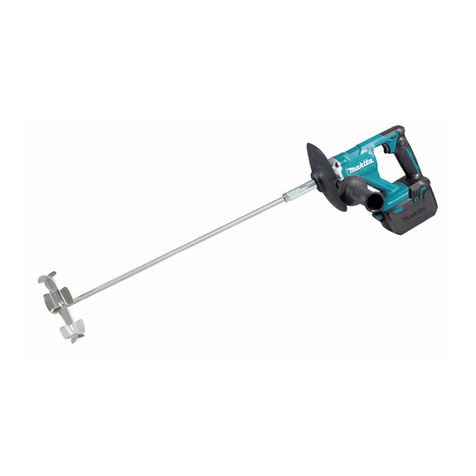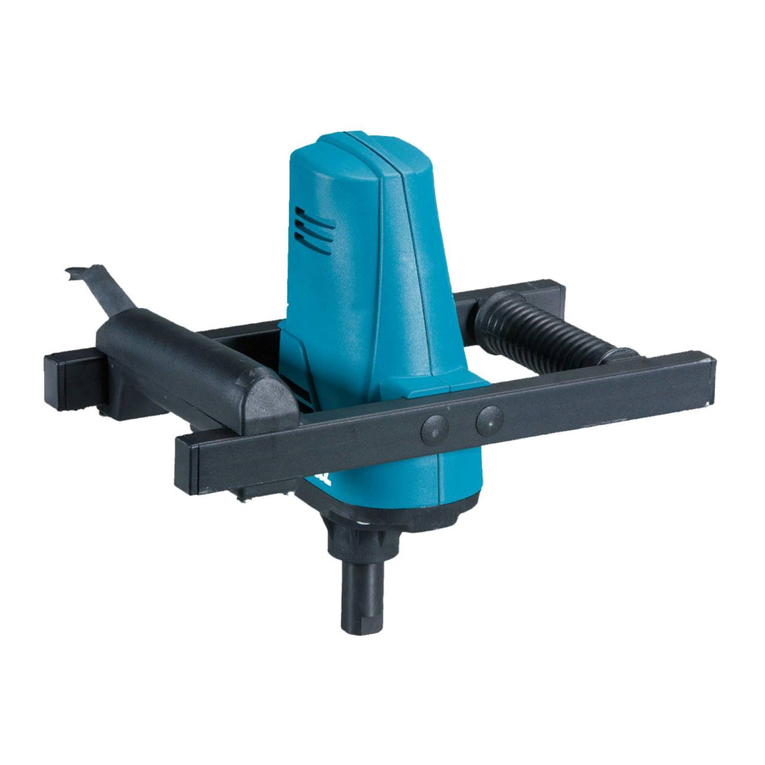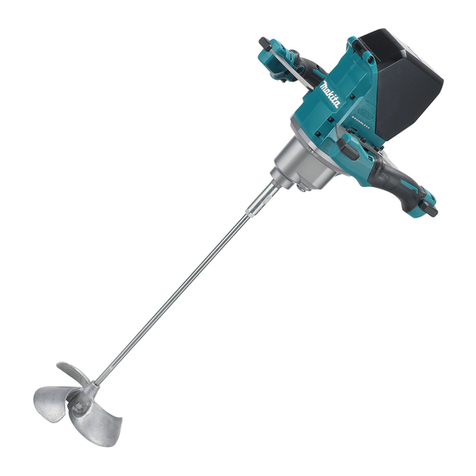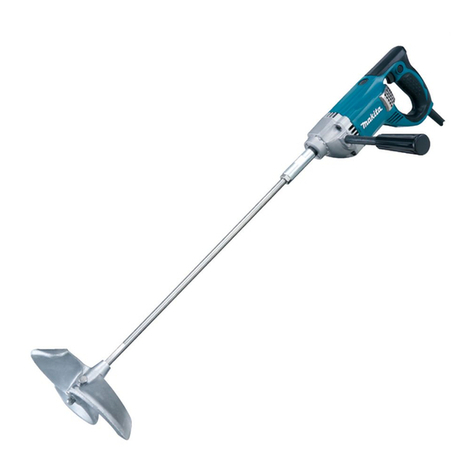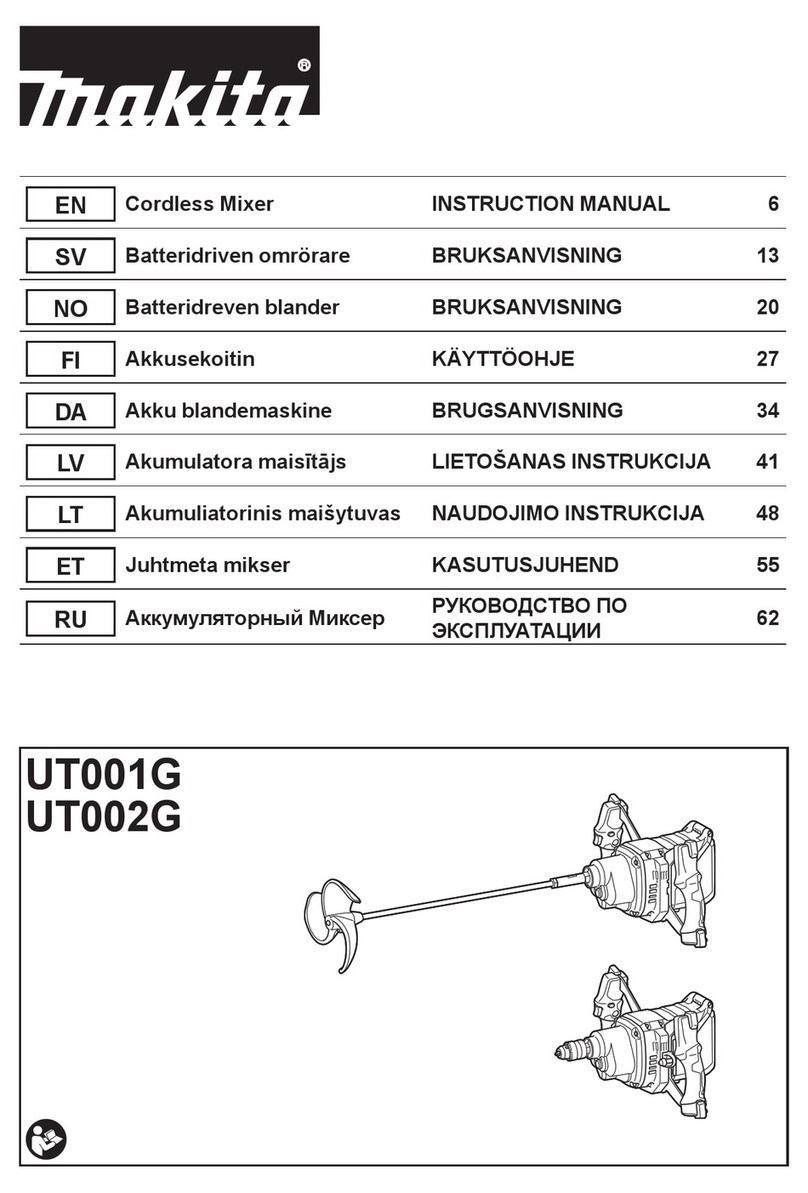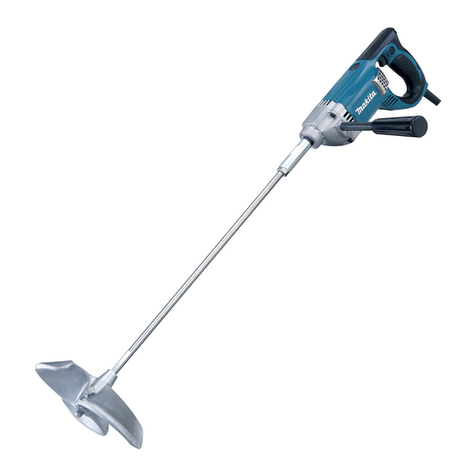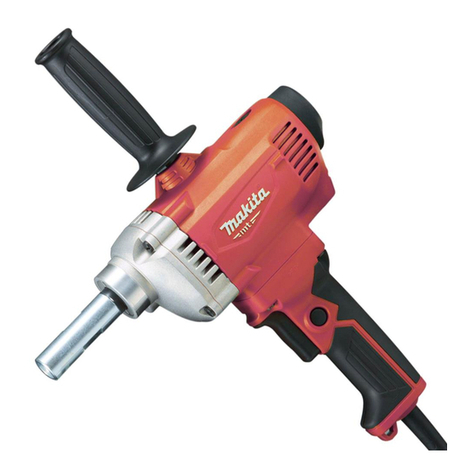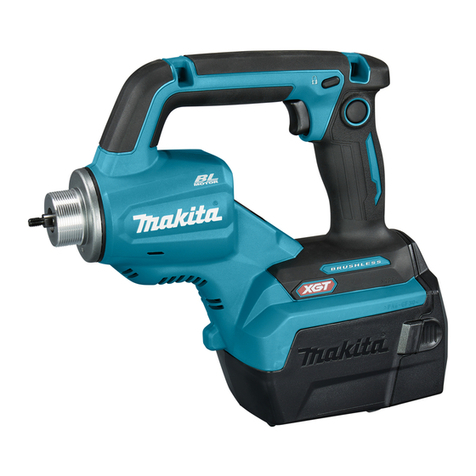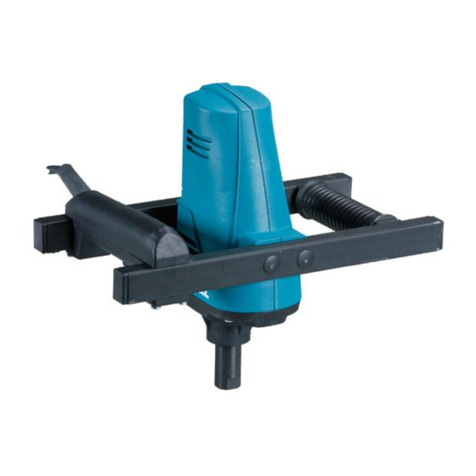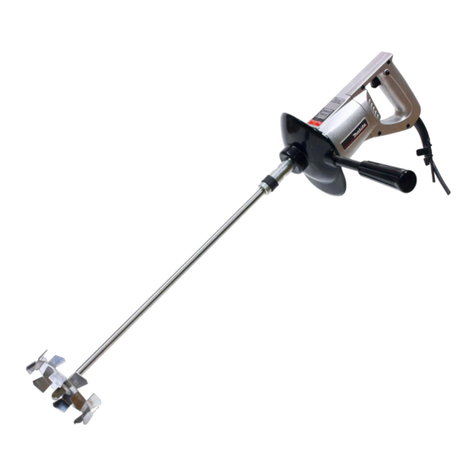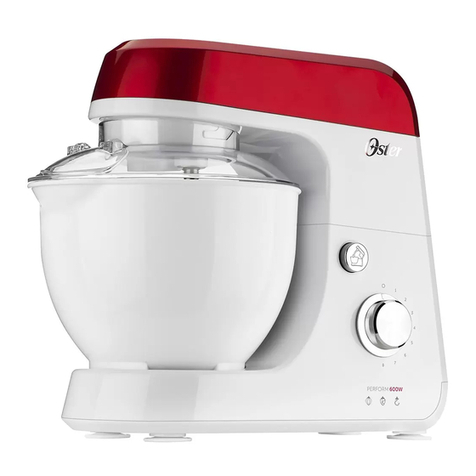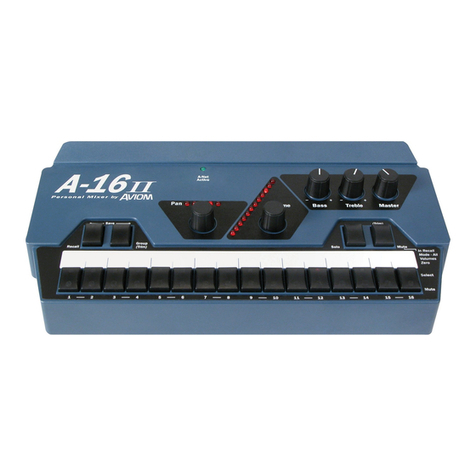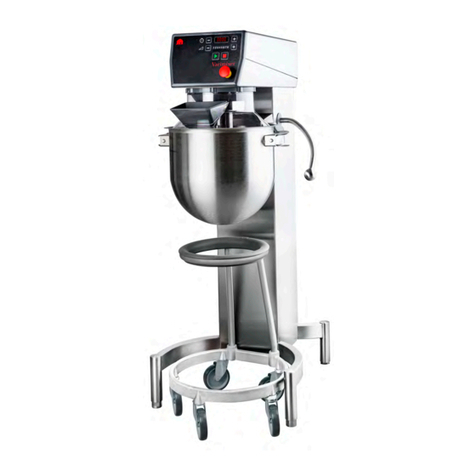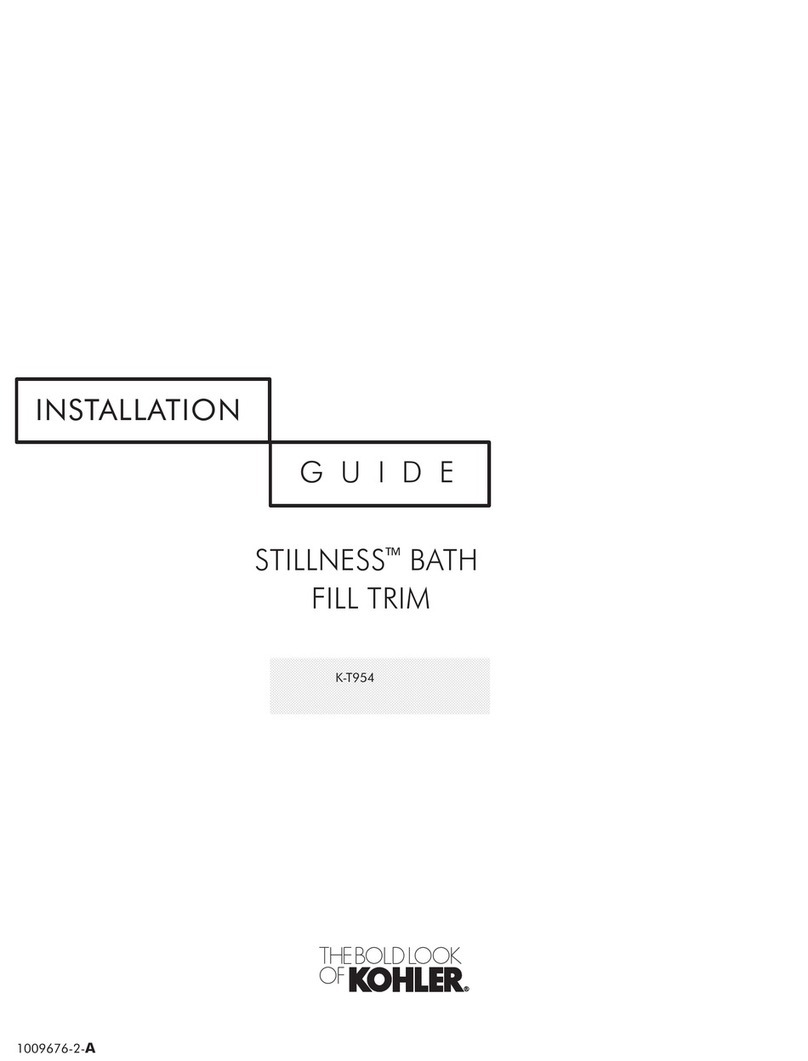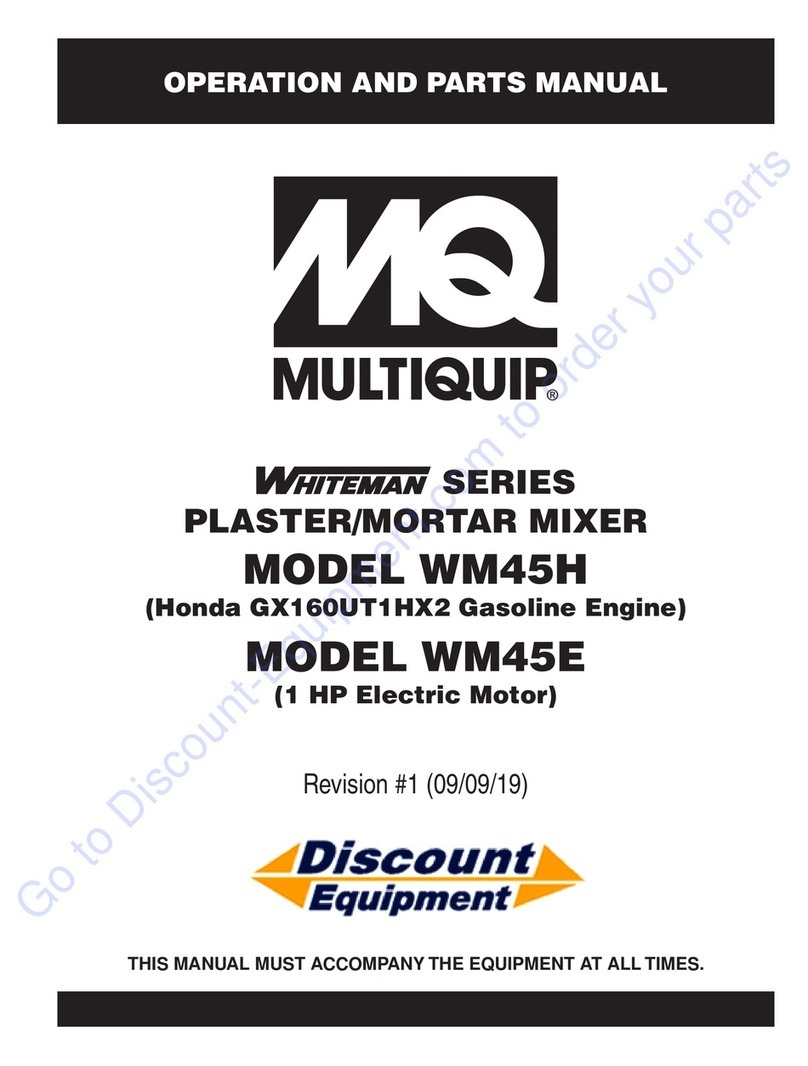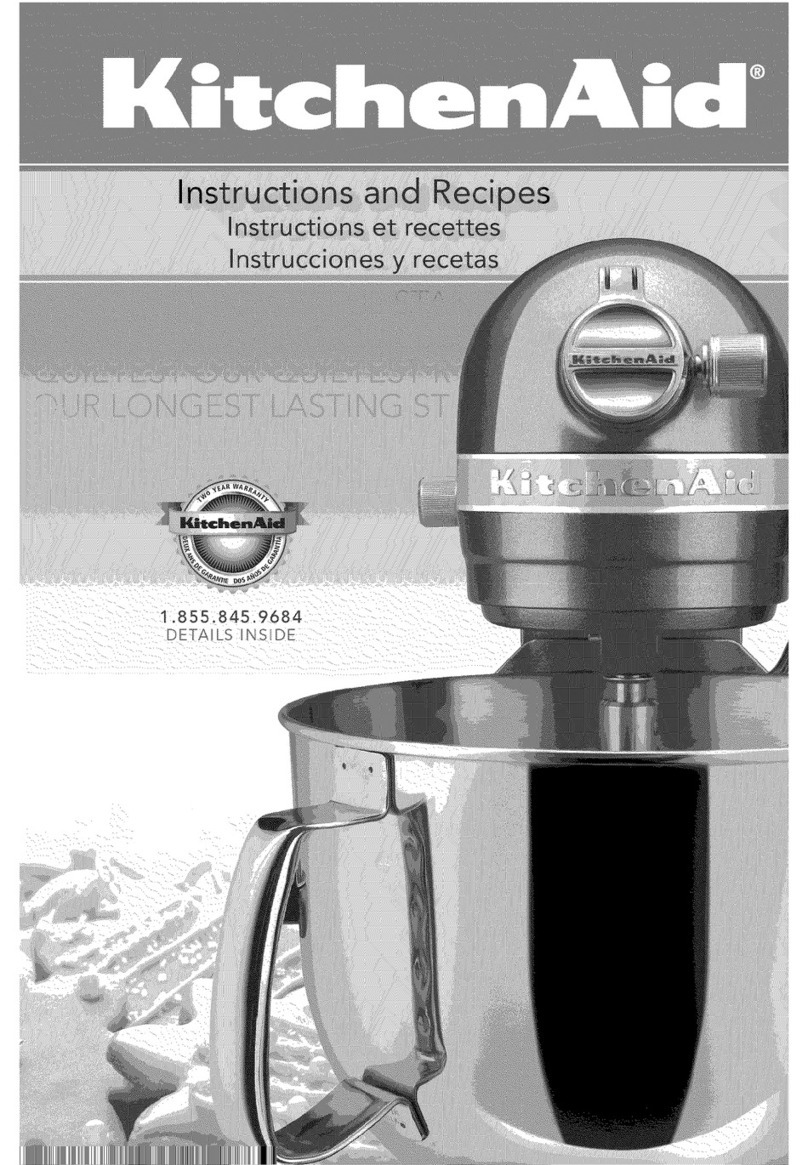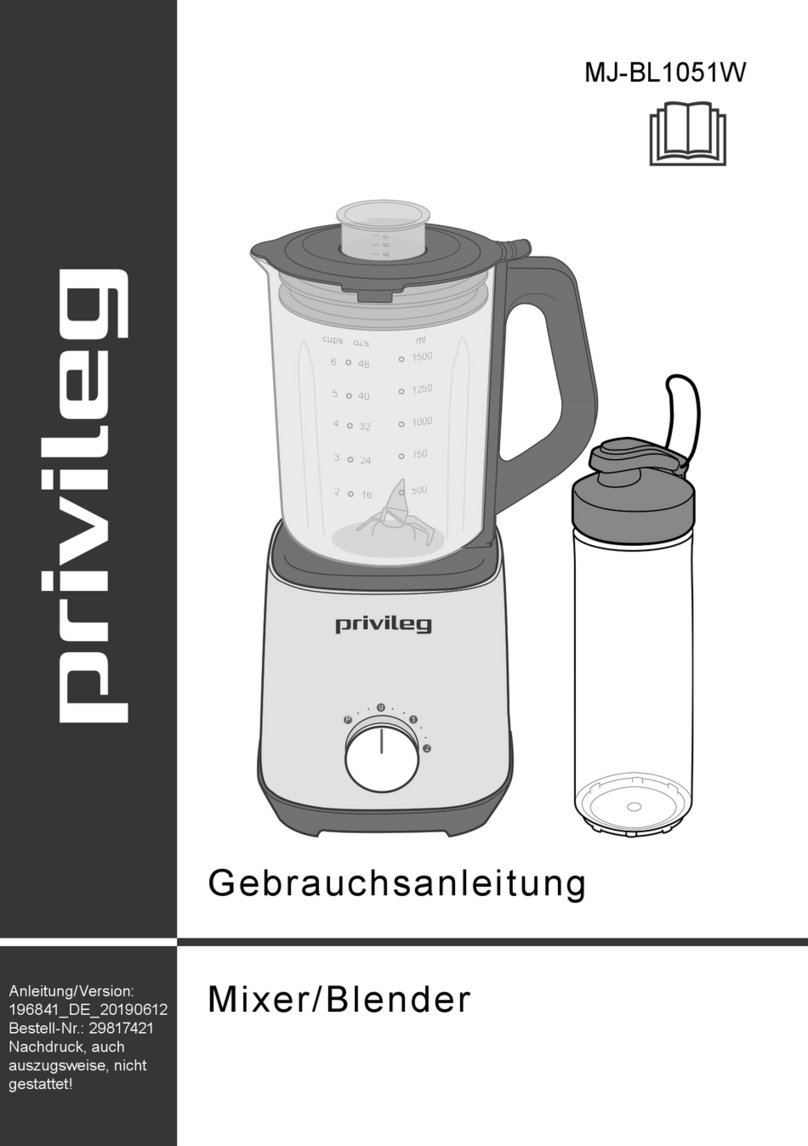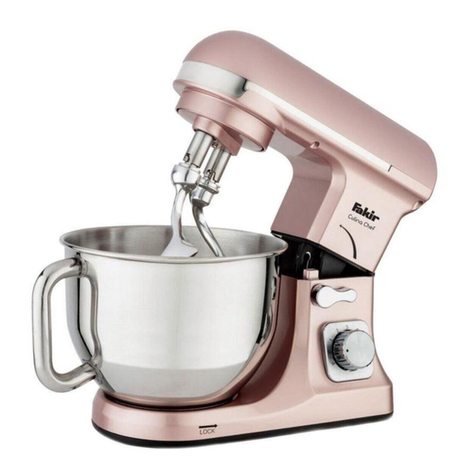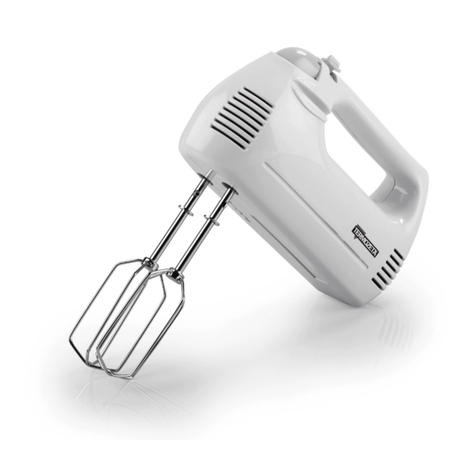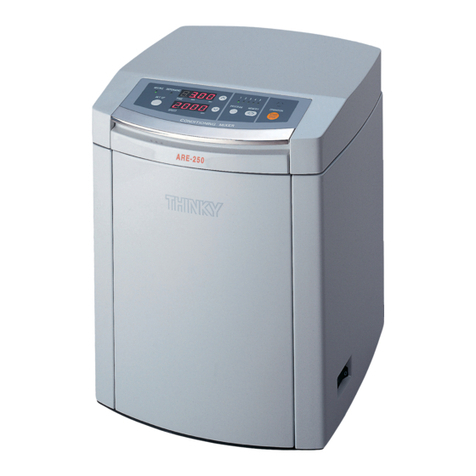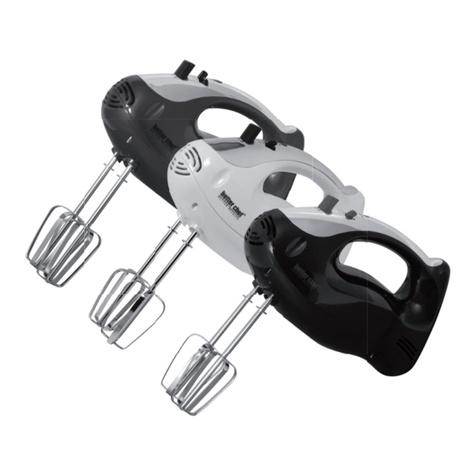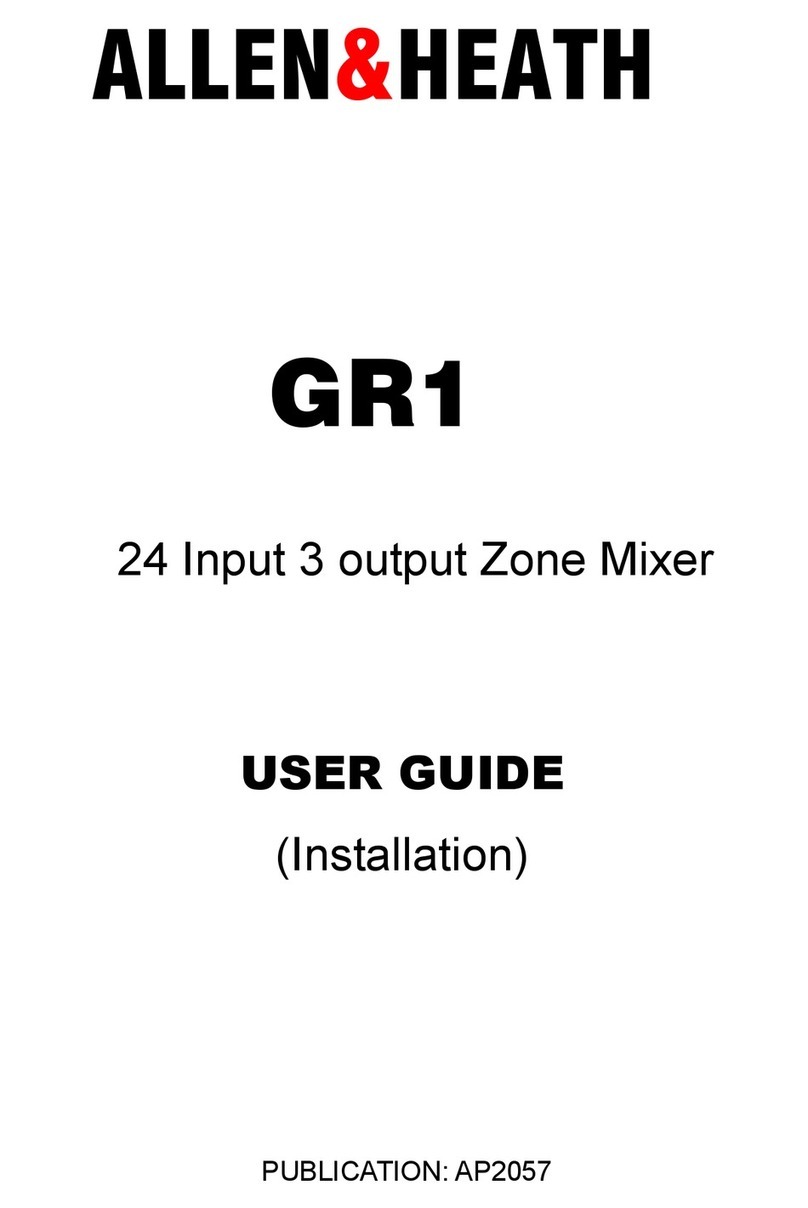
4ENGLISH
Power tool use and care
1. Do not force the power tool. Use the correct
power tool for your application. The correct
power tool will do the job better and safer at the
rate for which it was designed.
2. Do not use the power tool if the switch does
not turn it on and o. Any power tool that cannot
be controlled with the switch is dangerous and
must be repaired.
3. Disconnect the plug from the power source
and/or remove the battery pack, if detachable,
from the power tool before making any adjust-
ments, changing accessories, or storing power
tools. Such preventive safety measures reduce
the risk of starting the power tool accidentally.
4. Store idle power tools out of the reach of chil-
dren and do not allow persons unfamiliar with
the power tool or these instructions to operate
the power tool. Power tools are dangerous in the
hands of untrained users.
5. Maintain power tools and accessories. Check
for misalignment or binding of moving parts,
breakage of parts and any other condition that
may aect the power tool’s operation. If dam-
aged, have the power tool repaired before use.
Many accidents are caused by poorly maintained
power tools.
6. Keep cutting tools sharp and clean. Properly
maintained cutting tools with sharp cutting edges
are less likely to bind and are easier to control.
7. Use the power tool, accessories and tool bits
etc. in accordance with these instructions, tak-
ing into account the working conditions and
the work to be performed. Use of the power tool
for operations dierent from those intended could
result in a hazardous situation.
8. Keep handles and grasping surfaces dry,
clean and free from oil and grease. Slippery
handles and grasping surfaces do not allow for
safe handling and control of the tool in unexpected
situations.
9. When using the tool, do not wear cloth work
gloves which may be entangled. The entangle-
ment of cloth work gloves in the moving parts may
result in personal injury.
Service
1. Have your power tool serviced by a qualied
repair person using only identical replacement
parts. This will ensure that the safety of the power
tool is maintained.
2. Follow instruction for lubricating and chang-
ing accessories.
Mixer safety warnings
1. Hold the tool with both hands at the intended
handles. Loss of control can cause personal
injury.
2. Ensure sucient ventilation when mixing am-
mable materials to avoid a hazardous atmo-
sphere. Developing vapour may be inhaled or be
ignited by the sparks the power tool produces.
3. Do not mix food. Power tools and their accesso-
ries are not designed for processing food.
4. Keep the cord away from the working area. The
cord may be entangled by the mixer blade.
5. Ensure that the mixing container is placed in a
rm and secure position. A container that is not
properly secured may move unexpectedly.
6. Ensure that no liquid splashes against the
housing of the power tool. Liquid that has pene-
trated the power tool can cause damage and lead
to electric shock.
7. Follow the instructions and warnings for the
material to be mixed. Material to be mixed may
be harmful.
8. If the power tool falls into the material to be
mixed, unplug the tool immediately and have
the power tool checked by a qualied repair
person. Reaching into the bucket with the tool still
plugged in can lead to electric shock.
9. Do not reach into the mixing container with
your hands or insert any other objects into it
while mixing. Contact with the mixer blade may
lead to serious personal injury.
10. Start up and run down the tool in the mixing
container only. The mixer blade may bend or spin
in an uncontrolled manner.
11. Ensure that no liquid splashes against the
housing of the power tool. Liquid that has pen-
etrated the power tool can cause damage to the
tool.
12. Use auxiliary handles, if supplied with the tool.
Loss of control may cause personal injury.
13. Hold the power tool by insulated gripping
surfaces, when performing an operation where
the cutting accessory may contact hidden wir-
ing or its own cord. Cutting accessory contacting
a "live" wire may make exposed metal parts of the
power tool "live" and could give the operator an
electric shock.
14. Always be sure you have a rm footing. Be
sure no one is below when using the tool in
high locations.
15. Hold the tool rmly.
16. Keep hands away from rotating parts.
17. Do not leave the tool running. Operate the tool
only when you are holding it.
18. Some materials contain chemicals which may
be toxic. Take caution to prevent dust inhala-
tion and skin contact. Follow safety warnings
by supplier of the material.
19. When performing the mixing operation, place
the mixing container on a at and stable
surface.
SAVE THESE INSTRUCTIONS.
WARNING: DO NOT let comfort or familiarity
with product (gained from repeated use) replace
strict adherence to safety rules for the subject
product. MISUSE or failure to follow the safety
rules stated in this instruction manual may cause
serious personal injury.
